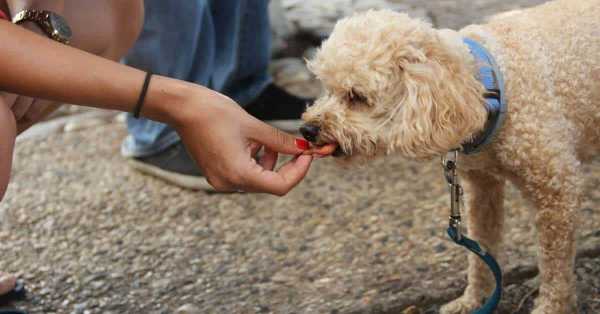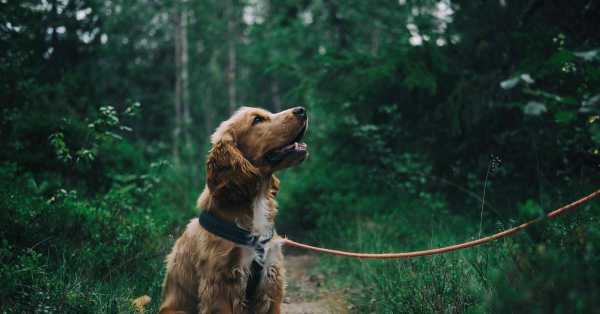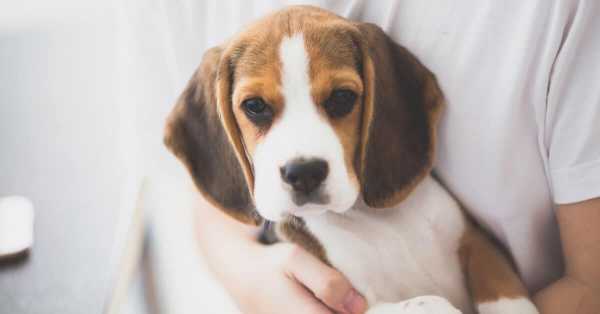You have adopted a new puppy, congratulations! However, you have a cat at home and you know that dogs love to chase cats. You may have a few questions about the first meeting and how to keep your new family member from stressing out your old pal kitty.
Read on pet lovers and discover some techniques that can be used to keep your household from becoming a battleground.

Why Dogs Chase?
Why do dogs chase….everything? It might come down to the type of dog. Most herding and worker-type dogs are bred to chase things.
For the rest, it is an inherited trait from their wolf ancestors. Motion in any object, be it a car, person, or yes dear old kitty cat, can trigger the prey drive.
This drive causes them to give chase to what a dog may perceive as food, a threat, or even something to play with.

Dogs Chase Cats…Why?
This brings us to the question of why do dogs chase cats specifically? Cats, being much smaller than most dogs can be seen as prey.
While wolves and dogs have been known to take down prey much larger than themselves, the smaller the prey, the easier to catch.
Now I am not saying your new pup may want to instinctively kill your cat right off the bat. He may see your cat as a fast-moving, furry toy.
This becomes a great game for him, but scary and stressful for the kitty. Read on to find how to avoid this.
Intros Please
In any introduction, the first impression is often the best. It is no difference between dogs and cats.
Since dogs and cats give off different pheromones, a sense of smell will be the first decider. You want them to get along, but you can’t force it.
This will take time, but with patience and appropriate tools, the first meeting and every meeting after that can be done with some sense of ease.

Meeting Place is Important
Choosing the right place for the initial meeting is critical. Most experts agree that the best place is in your own home. Doing the intros at an animal shelter can be very traumatic, especially for a kitty.
In your home, you have all the control and it is already familiar to your current pet. Try to keep introductions confined to one room as you don’t want a bad first meeting to take up your whole house.
Also, have a way for your current pet to get somewhere where they feel safe.
New Pet to Fit With The Old
Before you even adopt a pet you can ask staff if they have any cats that get along with dogs and vice versa. Remember, whichever new pet you are introducing into your home, your old pet was there first.
A dog already in the home may be more prone to chase out of dominance and the other way around, i.e. the cat may antagonize.
So make sure before that first meeting that you have done your best to make sure they will fit well together.
Stress-Free Meeting
To ensure a mostly stress-free meeting, there are a few steps you can take. Make sure you have treats both will enjoy, for praising. Train/refresh training on key cues for your dog, “come, stay, leave it”, or check and see if they have had any training.
Let the pup run off some of his energy before the meeting. This should help as he would then be too tired to want to chase the cat anyway.
Related Reading: How To Train Your Puppy To Come When Called?
The Nose to Nose
Now we are finally at the moment of truth, the face-to-face meeting. Make sure you keep strict supervision over both animals. It may be helpful to have a second person with you. Keep your dog on a short leash so that he can not get a head start.
Allow the animals to approach on their own and sniff each other. You are there to act as an intermediary in case something goes wrong. Otherwise, just let them take their time and feel each other out.
Praise Aplenty
Now that they have met each other and hopefully are behaving well, you can give both animals praise. Tell them they are doing a good job, pet them and give them extra of those delicious treats you have on you.
Things may be tense for the first few weeks, so there is nothing wrong with dishing out the praise and treats whenever they behave calmly around each other.
This is not just for your peace of mind, but theirs as well, so remember this may take time, but totally worth it.
Leave It
Both animals are in your home, but you still notice that your dog wants to chase the cat. Training is required here and there are several techniques to be used. One of those nifty methods is the Leave-it technique.
This is useful not only for in your home but for cats around your neighborhood too.

Treat Holding
Before you can use this method with your cat, you are going to want to try it with a treat. First, hold a treat in each hand. Only allow your dog to sniff one hand. At this point, the dog will get excited because you have a treat.
However, ignore all attempts to get at the treat. Continue to hold your ground no matter how hard he whines or big his eyes get.
The Command
After your dog has smelled only one of your hands, say “leave it”. You do not need to raise your voice, but be firm. You do not want there to be any room for argument. He may not respond the first or even the second time you say it.
Keep repeating “leave it” and ignoring his attempts to get the treat until he responds and sits in front of you.
[amazon box=”B0002DGRSY” template=”horizontal”]
Train, Reward, Repeat
The rule of thumb here is to be consistent. You should repeat this exercise until the dog immediately backs away when you say “leave it”. Through repeating the process you are ingraining into the pup’s mind this command. Once he has mastered it, you can move on to using it around your cat.
Leave It and Your Cat
Now that your dog understands “leave it” you can begin using it around the cat. Continue to supervise both animals when they are together. This may take more time than with the treats, the cat makes a much more tempting object.
Be patient with your pup and continue to praise and reward when he does the right thing. Before you know it, not only is he leaving your cat alone on command but other cats in the neighborhood.
Cats in Other Places
You want your dog to not just leave your cat alone, but cats around town where you walk right? The above-mentioned methods can help on this path, but keeping your dog under control while out and about can take just a bit more training and concentration. Here are some ways to help your dog out.
Check: 66 Tips For New Puppy Owners

Leashes Save Chases
One way to alleviate the chase is to keep your dog on a leash when out for a walk. There are some places that require this anyway, but it is good to keep in mind. The drive to chase cats can be more powerful in the open. You can use the leave it technique but there may still be some pulling on the leash.
Practice keeping your dog’s attention on you so that he won’t be bothered by the outside cats and work on training him to come on command, both on the leash and off.
Keep it in the Yard
Should you have a big enough yard, consider confining the dog to it. You want him to have enough room to run around and not feel trapped. Use a tether to keep him in the yard and/or erect a fence he can not get over.
This may help ensure he can’t get to outside cats and they can’t get in.
No Cats Allowed
Another way to help keep your dog away from outdoor cats is to simply keep them out of your yard. There are a few ways to do this. Since more than likely you are going to be keeping an eye on your pup while in your yard, you can chase any cats that come in, manually.
This can be as simple as saying shoo or shaking your hands at them. If this proves to be unsuccessful, you can install motion-triggered water sprayers around the perimeter of your yard.
When to Get Involved?
You are the intermediary between your pets, so there are times when you have to step in and take control. This can keep serious injuries from happening. Your cat can do a number on your dog with her claws and your dog, though not meaning to, can kill your cat.
However, you also want to make sure you do not get hurt either, so quick action before the fur flies is a must.
Supervisor
With everything, training takes time. Until your dog has gotten through all of his training may it be safe for the two to be alone. So it stands to reason you are going to want to monitor their contact. Once they have become better acquainted, you can let your guard down a bit more.
Timeout
Another way you can step in is to put your dog in timeout. You will want to choose a timeout room that is still comfortable for your dog. You don’t want to cause him harm, you just want to teach him. When your dog is behaving badly, gently lead him away from the situation by his collar.
Let him know he has done wrong. Calmly say timeout when leading him away. Put him in the room and wait for a short while, one or two minutes. Calmly release him. If he continues to misbehave, repeat the process.
Undesirable Cats
If nothing else is working, you may male cats undesirable for your dog. This should be done without harming the animal. Associate chasing the cat with an undesirable experience. This can be a mildly unpleasant noise or a spray bottle with cold water or slight citrus-scented water.
Most dogs do not like citrus scents. Just make sure that any experience you put your dog through that it causes no injury.
Trainer Needed
Extreme cases may call for the use of a trainer or behaviorist. Make sure that any specialist you see is certified. This can be a Certified Professional Dog Trainer (CPDT) or a board-certified veterinary behaviorist.
Either one of these will be able to determine what drives your dog to chase and how to break the habit. These resources can be found online, but make sure to get references and check online reviews to make sure you get the best fit.
Muzzle for Safety
Sometimes a muzzle can be a good option if your pup is a little over-enthusiastic. A basket muzzle should work well. First, show the puppy the muzzle and let him sniff it for familiarity. Hold it like a bowl. Put one of his favorite treats inside and allow the pup to retrieve the treat from inside.
Repeat the treatment process until your puppy becomes more accustomed to the muzzle. Finally, fasten the muzzle and feed extra treats for tolerating it. He should only get treats while wearing the muzzle so he associates it with a reward.
Carrier Technique
Another method of training to try is the carrier technique. Note that this should only be used if you have a confident cat, any cats may be too traumatized by this method. Place your cat in a protective carrier without the pup in the room. Make sure to have a toy or catnip in there to keep the kitty calm.
Bring puppy into the room and feed him treats to keep his focus on you and to reward calm behavior. Practice obedience commands that he knows well and reward him for obeying. Offer your best treats for moving or looking away from the cat.
The idea here is to teach your dog he gets better rewards for leaving the cat alone.
Cookie Cat
Cookie Cat sounds like something you bake, but it’s a method of training. Ensure your cat’s safety at all times. Have plenty of treats on hand. Let the cat roam freely about the house, while you keep your dog’s attention on you by teasing treats.
Each time the cat shows up and gets your dog’s attention, give a taste of the treat and give a click if you clicker trained. Be consistent and offer this treat/click no matter how your dog responds. You want him to equate that cat equals treat.
Continue this until you are confident your pup has mastered looking to you for a treat when the cat comes into play.
Your Cat Needs You Too
Your dog has been talked about a lot here but don’t forget your cat. Create a safe space for her to get away, most cats prefer someplace high to hide. Keep her litter and dishes in a place only she can get to, for both of them.
Praise and reward your cat for not antagonizing or swiping at the dog. As always make time for her and you away from the puppy if you can.
Read To Learn: How To Deal With Your Puppy Teething And Nipping?
You are Alpha
Dogs are pack animals, and with that comes a certain pecking order. In this order, in your home, you are the alpha and you want to make sure your pets are aware of that. Be strong but fair. There is no reason to raise your voice or hurt either animal to assert dominance.
Reprimand quickly and fairly, just as quickly forgive and let it go. Be hands-on with warmth and love. Your dog should obey you without question, but not fear pain from you.

Humane Punishments
There are ways to reprimand your pets that are safe and humane. You can distract away from bad behavior by calling attention to yourself. There is the put-down where you gently, but firmly push your puppy onto his side, which asserts dominance.
Isolation is a method where you tell the animal no and then ignore them. Also, squirting the animal with a bottle whole saying no can be effective.
Dog Self Control
Believe it or not, your dog does have self-control. At first, you will be fighting against natural instincts, so it will be time-consuming to ingrain these techniques. One way to teach self-control is by sending them to their bed. This gives them something to do besides misbehaving.
Another good method is STOP. This teaches the dog to freeze on the spot, this makes it easier for him to listen to you.
Popular Read: Why Is My Dog Chewing So Much?
Split Attention Focus
When a dog is overstimulated, it switches the thinking part of the brain off. So if your dog has suddenly stopped responding to commands, he is not ignoring you, he may be unable to respond. Split attention focus can teach your dog to listen while near or at his arousal zone (The inability to think straight) and to slowly decrease that zone.
Slowly introduce distractions while using stop or leave it techniques. You can go up levels of distraction as long as you are successful many times.

Socializing Dog with Cats
The easiest time to introduce cats and dogs is when they are younger. Growing up together can create a bond and make life easier.
However, this is not always possible. You can use synthetic hormones to familiarize the animals with each other’s scents. In any case, it is always good to start slow when socializing a dog with a cat, no matter the age.
Final Thoughts
As you go along you will find what works with your pets and what does not. The above methods and techniques are just a sampling of what you can do to help your animals coexist.
Yes, it takes time and patience but keep at it and soon your home will be pet-friendly for all and peaceful.
Further Readings
Other Puppy Adoption Related Topics
1. Top Best Dog Beds For Pugs

